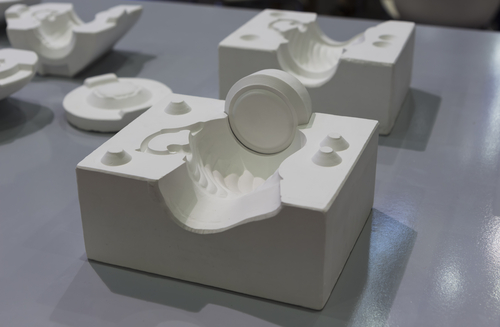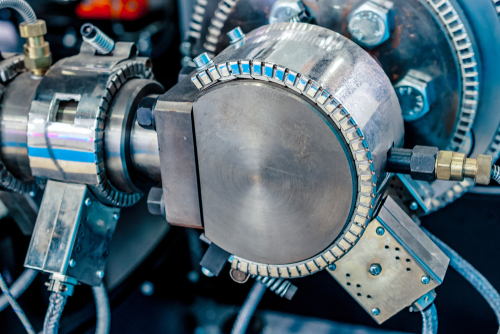It’s not only the variety of available materials for the manufacturing of advanced ceramics that have made them so popular for the production of various parts and components. The molding process for advanced ceramics is suitable for serial production of uniform components that serve different purposes depending on the customer’s needs. This is also what makes ceramic injection molding services so popular and sought-after across the globe.
How are advanced ceramics molded into different parts?

The creation of advanced ceramic components consists of two equally important parts – the selection of materials to be used in the production and the manufacturing process itself. You cannot make an adequate advanced ceramic component without an accurate manufacturing process, and it’s important to master its several stages.
Raw materials
The first step in the process of advanced ceramic molding is the handling of raw materials that will comprise the finished product:
Milling / mixing
The mixing and milling of raw materials is vital for the production of high-quality ceramic components because it determines the properties of the material, as well as the stability and the quality of finished products. Solvating media and raw powder go into a mill alongside ceramic balls. These raw materials then undergo a series of shakes and rotations to become a uniform mixture.
Spraying / drying
Once the raw materials compose a slurry, they get sprayed and dried in order to begin forming a granulated powder of small, spherical bodies. This helps make the next portion of the process faster and easier.
Forming methods
The type of the forming process depends on the type of raw material used in the manufacturing process, as well as the component in question:
Cold isostatic pressing and cutting
Raw materials enter a rubber mold where they begin forming the desired shape through application of hydraulic pressure. After formation, these components undergo the process of cutting to get them to the precise shape. This process involved super hard drills and tools that are capable of cutting through the extremely hard advanced ceramics.
Dry pressing
This manufacturing process includes filling the die with granulated and dried raw materials. Then, the machine presses the materials into the shape close to the final product. This is a great method for massively producing semi-complex components that require exceptional dimensional accuracy.
Hot pressing
This is a process very similar to dry pressing, but it involves applying pressure at very high temperatures to reduce the material’s porosity and produce densely-sintered bodies. Raw powder goes into a carbon mold that gets simultaneously pressurized and heated to create the body. This process is excellent for simpler shapes.
Extrusion
This manufacturing process involved mixing raw granulated materials with a dispersing agent, plasticizing agent, binder, and water to create a clay-like mixture that operators extrude into their desired shape under high pressure.
Tape casting
This manufacturing procedure is excellent for producing thin, continuous compacts by using a mixture of solvating media, binder, and raw powder.
Injection / casting
This is the process that uses a semi-fluid mixture of additives and raw materials. The injection process includes molding dies filled under pressure before being cooled to allow the mixture to harden. When it comes to casting, experts combine raw materials, dispersant, and solvating media before feeding the mixture into an absorbent die. Then, the operators dehydrate the material to solidify it and make it compact.
Sintering
Sintering involves compression-molding raw materials by heating them to temperatures slightly below their melting points to create density and sinter the powder. There is a variety of different sintering methods depending on the intended use of the end-product, such as atmosphere and vacuum sintering.
Grinding and bonding
Finally, it’s time to apply the finishing touches to ceramic components through bonding, metallization, grinding, and polishing.
Bonding
Bonding involves joining several ceramic products, or joining together ceramic components to resin or metallic materials.
Metallization
This refers to affixing a layer of metal to the surface of a sintered product to provide hermetic sealing or to create conductive patterns.
Grinding and polishing
This is vital for ensuring a high level of accuracy for the finished product. Ceramics are incredibly hard, which is why it’s necessary to use diamonds for polishing and grinding.
Inspection
Once completed, end-products undergo a stringent inspection and tests to ensure they perfectly conform to customer specifications before being shipped.
Who offers industry-leading ceramic injection molding services?

This is where Wunder Mold steps in. We are the leading manufacturer of parts and components from advanced ceramics. We carefully choose the most suitable materials and implement a modern manufacturing process to ensure exceptional results. We will provide you with a finished product according to your exact specifications. You can call us at (707) 448-2349 or you can send us an email at sales@wundermold.com. Reach out today!